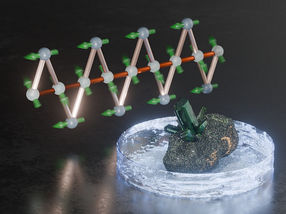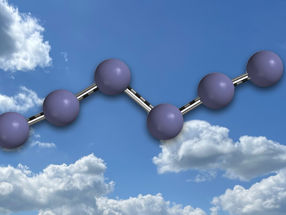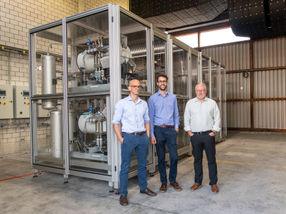One Mystery of High-Tc Superconductivity Resolved
Research published in 'Science' by Tonica Valla, a physicist at the U.S. Department of Energy's Brookhaven National Laboratory, appears to resolve one mystery in the 20-year study of high-temperature (high Tc) superconductors - materials that lose their resistance to the flow of electricity at relatively high temperatures. The research shows that a "pseudogap" in the energy level of the material's electronic spectrum is the result of the electrons being bound into pairs above the so-called transition temperature to the superconducting state, but unable to superconduct because the pairs move incoherently.
In conventional superconductors, which operate at much lower temperatures (near absolute zero), superconductivity occurs as soon as electron pairs are formed. But in the case of the high-Tc materials, the electrons, though paired, "do not 'see' each other," Valla says, "so they cannot establish 'phase coherence,' with all the pairs behaving as a 'collective.'"
The origin of this pseudogap, along with the mechanism for forming the pairs necessary for superconductivity, has been one of the biggest mysteries scientists have been trying to understand about high-Tc superconductors since their discovery some 20 years ago. Because of their higher operating temperatures (up to 134 kelvins at ambient pressure and up to 164 K under high pressure), high-Tc superconductors have much greater potential for real world applications, such as zero-loss power transmission lines, than do conventional superconductors.
The material studied by Valla's group - a special form of a compound made of lanthanum, barium, copper, and oxygen, where there is exactly one barium atom for every eight copper atoms - is actually not a superconductor. With less or more barium, the material acts as a high-Tc superconductor (in fact, this was the very first high-Tc superconductor discovered). But at the 1:8 ratio, the material momentarily loses its superconductivity.
Yet despite the fact that this material, at this ratio, is not a superconductor, it has a very similar energy signature - including the energy gap in the electronic spectrum (pseudogap) - as other high-Tc superconductors in their superconducting states.
Valla's group interprets the finding as evidence that the electron pairs are formed first (as "preformed pairs") and phase coherence occurs later, at some lower temperature (the transition temperature, or Tc), when thermal fluctuations of the phase are suppressed enough to cause superconductivity.
Most read news
Topics
Organizations
Other news from the department science

Get the chemical industry in your inbox
By submitting this form you agree that LUMITOS AG will send you the newsletter(s) selected above by email. Your data will not be passed on to third parties. Your data will be stored and processed in accordance with our data protection regulations. LUMITOS may contact you by email for the purpose of advertising or market and opinion surveys. You can revoke your consent at any time without giving reasons to LUMITOS AG, Ernst-Augustin-Str. 2, 12489 Berlin, Germany or by e-mail at revoke@lumitos.com with effect for the future. In addition, each email contains a link to unsubscribe from the corresponding newsletter.



























































